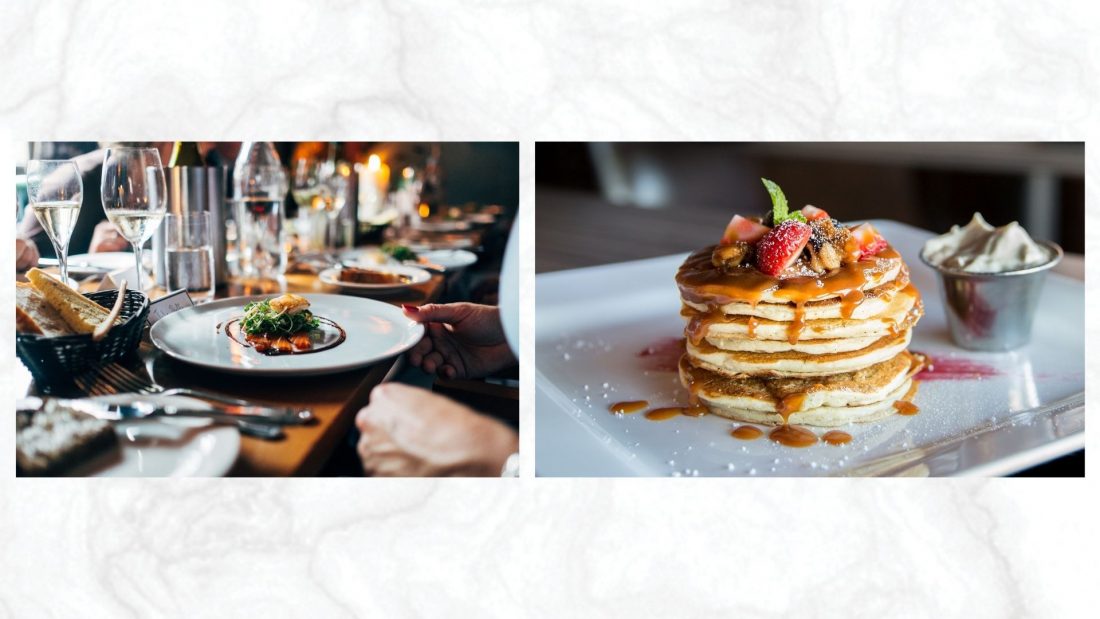In this post we’ll cover how to take photos of your dishes when dining out and the best camera settings for taking photos of food.
Getting the lighting right
Lighting is a key consideration when taking photos of your dishes, the challenge when dining out is having little control over this compared to where you’re at home.
If you’re able to sit near a window (if it’s daytime), the natural light will be very beneficial, take your photo side-on to the window as opposed to directly opposite to avoid shadow on the front of the dish.
If it’s night time or there’s little natural light, you may think built-in flash would work, but often this can be very harsh and reflect back off white dishes and any sauces or juices.
Instead up the ISO (if you’re using a camera) or increase the brightness and reduce shadows when you edit your photos. If there’s table lighting and/or an area of the table that is brighter, temporary move your dish to take your photo near it to get the most light from the environment.

Tips for flatlays
Flat lay style is a popular angle for food photography, which is taking a photo of the table directly above. This works well if you have multiple dishes (like tapas style) or a beautiful table setting.
Arrange your table setting and dishes by thinking about symmetry and placing larger dishes in the middle and smaller dishes and drinks around the edges. You can experiment by removing dishes or drinks from the photo if you feel the table looks too cluttered.
If possible, capture as much of the table to give you the most flexibility when editing and cropping the image, unless of course you’re focusing on an individual dish.
Experiment with low aperture
Using a low aperture number (f2.8 or below) on your camera, or portrait mode on an iPhone, will create a narrow depth of field which is ideal for food photography.
Focus the camera on a key element of the dish, for example if you’re photographing pie, mash and vegetables – focus on the pie.
Experiment with low apertures, a soft gradual blur that radiates away from the in focus element often produces the best result as opposed to a really low aperture when areas out of focus become too blurred that the rest of the dish looses detail.
Adjust your angle when taking the photo and consider other elements of the table, like cutlery or placing another dish in the background that would be out of focus.
